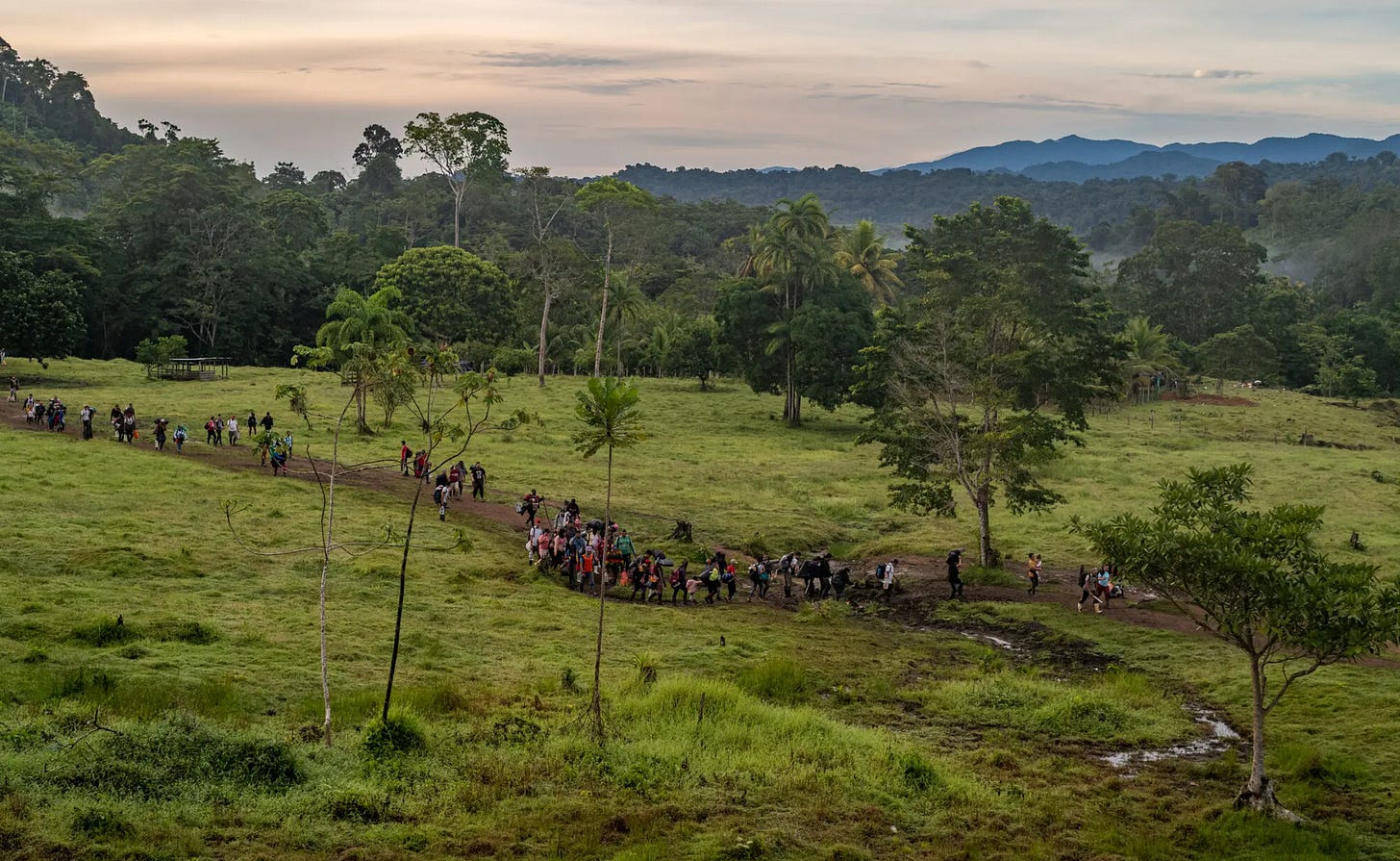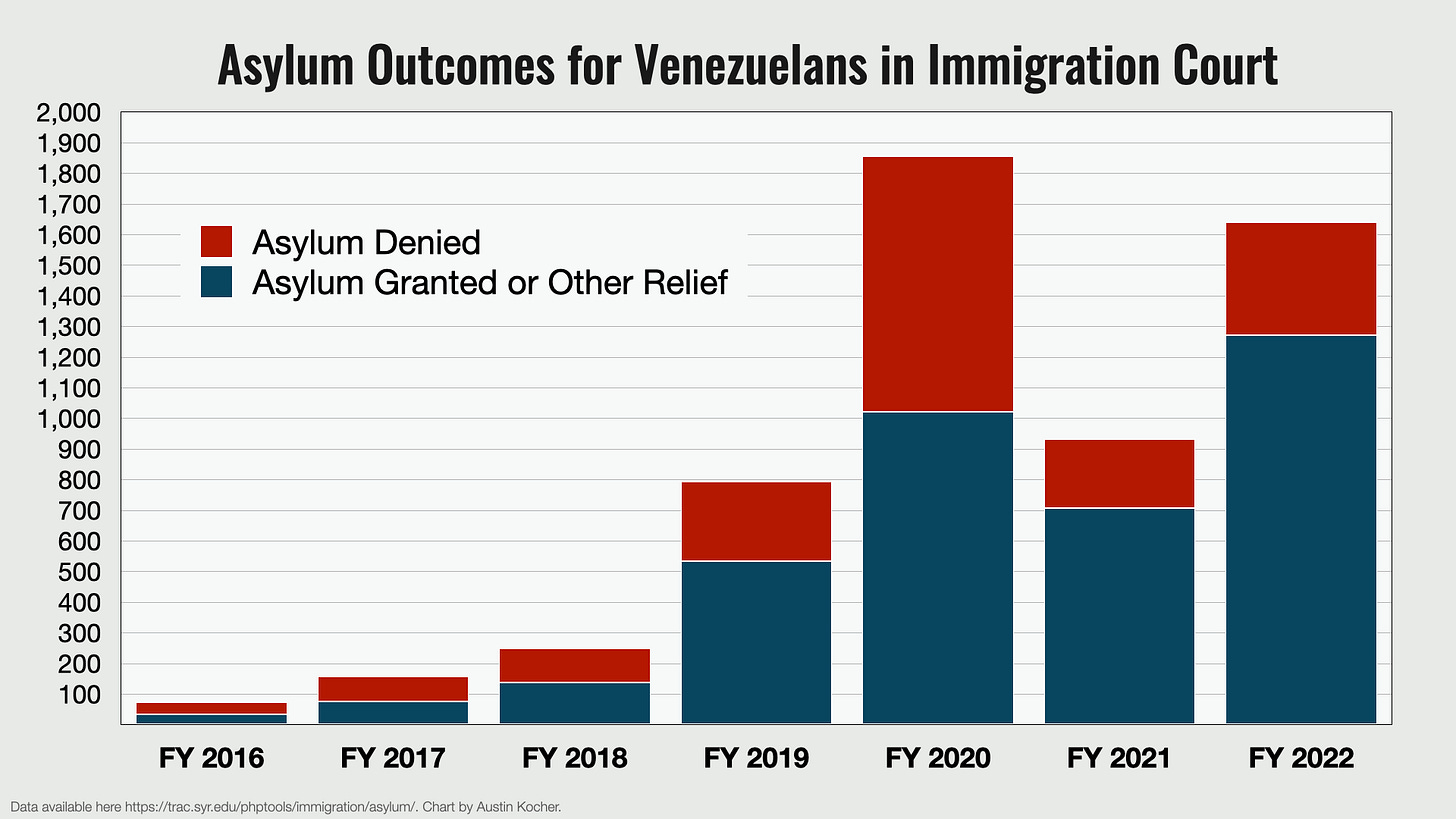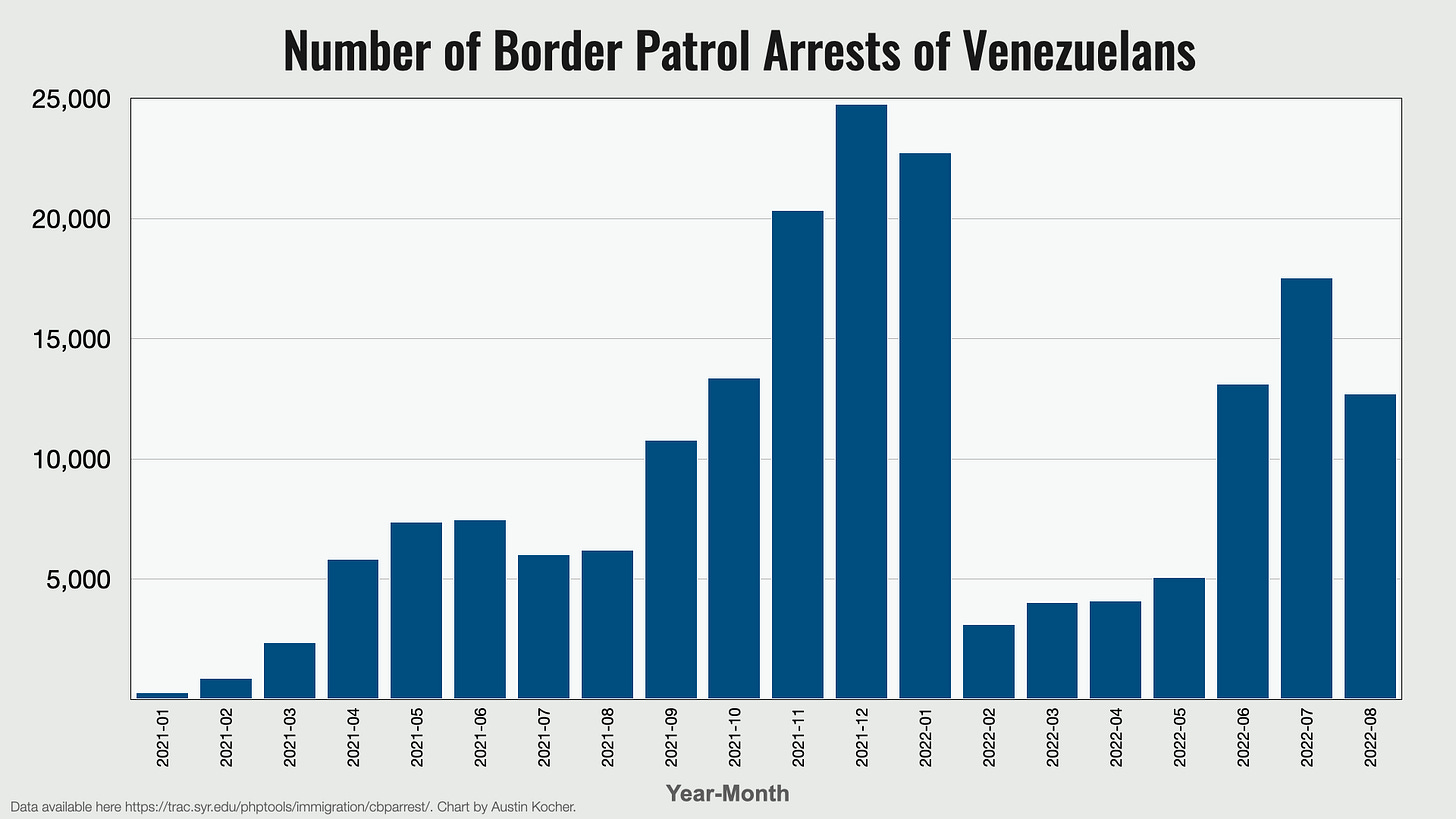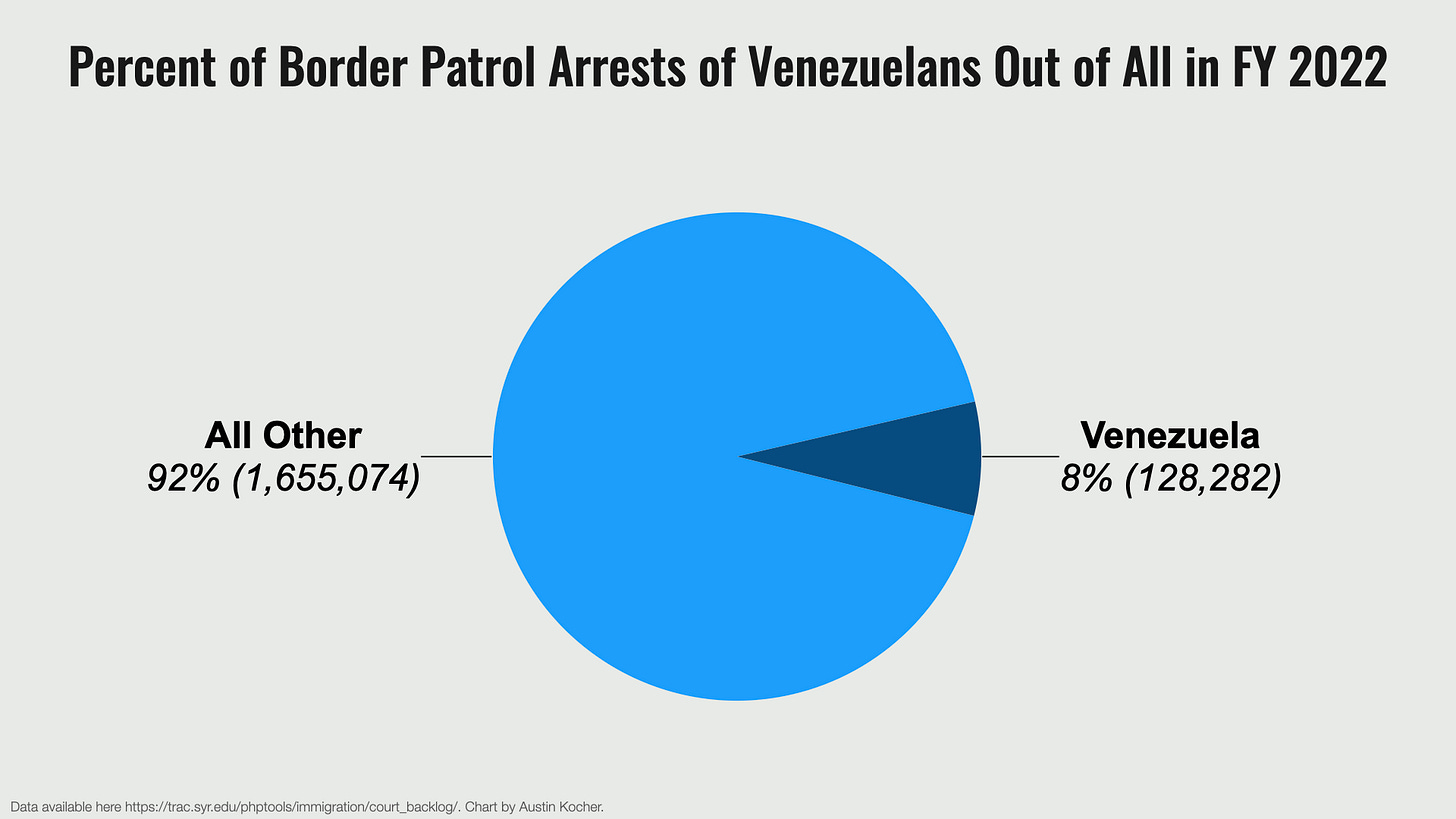Most Venezuelans crossing the US-Mexico border unlawfully will be sent back to Mexico under a new policy agreement between the Biden administration and the Mexican government announced yesterday (October 12, 2022).
The policy also creates a pathway for lawful entry for 24,000 Venezuelans who have a financial sponsor and who have not been deported in the past five years—though this raises questions about how many Venezuelans who are seeking asylum will meet the eligibility criteria.
The policy’s central message is stated clearly: “Venezuelans should not travel to Mexico to pursue entry into the United States.” But the policy does not address how this program interacts with the country’s asylum and refugee obligations, nor whether this approach will be expanded to asylum seekers from Central America.
As you may recall, the Trump administration implemented a similar policy called the Migrant Protection Protocols (MPP), also known as “Remain in Mexico.” Under that program, asylum seekers were turned back to Mexico and given a court date. The DHS announcement does admit that Venezuelans are “fleeing the humanitarian and economic crisis in Venezuela,” but caps the number of people that the country is willing to take.
Highlight: Read this excellent coverage of Venezuelan’s trek north by Julie Turkewitz’s article titled “In Record Numbers, Venezuelans Risk a Deadly Trek to Reach the U.S. Border”.

This policy announcement doesn’t even mention asylum at all, in fact. In a somewhat ironic turn, one could say that at least under Trump’s MPP program—which, let’s be absolutely clear, was justified for the same reasons that Biden is using for this program—at least created the option of attending an asylum hearing in front of a judge (though contextual factors made this all but impossible). Will Border Patrol turn back migrants who make a claim of fear? Will the Biden administration gradually curtail all asylum claims from people who traveled through Mexico? If so, it would be consistent with trends across the developed world to use secondary countries as buffer zones between refugees coming from the Global South to the Global North.
It’s difficult not to compare the treatment of Venezuelans with Ukrainians, who were waved through ports of entry in very large numbers despite being inadmissible. About 42,000 Ukrainians have come to the US through ports of entry in 2022 alone with remarkably little fuss from the public (see previous report by TRAC here). The DHS’s policy announcement references this fact, even drawing on the purported “success” of the Uniting for Ukraine Program, which set a goal of welcoming 100,000 Ukrainians through an “orderly process.” The various analytical points I want to raise related to what this all says about the geopolitical imagination of Biden administration would take too long to explore, so I’ll have to leave it there.
It’s also difficult not to put this policy in conversation with the spectacles created by Governors Abbott and DeSantis who have been bussing and flying recently arrived asylum seekers, very many of whom are Venezuelans, to cities and towns along the east coast. (See my write-up of DeSantis’s Martha’s Vineyard flight here.) What’s the relationship here? Even if DHS’s new policy is not a direct reaction to those actions, many people are likely to conclude that Abbott and DeSantis effectively forced the administration to act, which risks incentivizing these kinds of state-led activist stunts.
With these questions in mind, let’s look at the current data on Venezuelans in the US immigration system. I am not going to walk through each chart because they all point to the same fundamental phenomenon: as a result of instability in Venezuela, Venezuelans have been coming to the United States in much larger numbers than ever before. But even knowing this, the charts do give you more precise numbers about the timeline and scale of growth since 2021, as well as some context about the percentage of Venezuelans out of all migrants.
What do you think? Rather than providing an interpretation of these data, it would be great to know what you see in the data? If you have a moment, feel free to leave a comment about how you make sense of the charts here or what you think of the Biden administration’s new policy on Venezuelan migrants overall. Feel free to share the charts or this post online.
Support public scholarship.
Thank you for reading. If you would like to support public scholarship and receive this newsletter in your inbox, click below to subscribe for free. And if you find this information useful, consider sharing it online or with friends and colleagues.












The announcement seems to be a dressed-up version of "Do not come." I read the DHS statement in the link above, and I'm unclear on whether a person from Venezuela who shows up at, say, the San Ysidro/Tijuana POE on foot will be allowed in or rejected via Title 42. The DHS announcement refers to arriving by air, and seemingly with a lot of proof of sponsorship, adequate financial support, etc. If that's the case, this policy will be reserved for those who have the financial means to get out of Venezuela. I doubt most of those mud-caked families in the Darién Gap in the NYT article you linked to would have the means to follow this policy.
This new policy is a contradiction of the Biden government towards Venezuelans. In March 2021, his government benefits venezuelan with a TPS because recognized the political and economic difficulties of the country, a month ago the extension of the TPS was announced and now, it closes the door to other Venezuelans, who instead of coming by plane, cross the border. This measure is discriminatory towards the nationals of Venezuela, it is an international violation of the Human Right to request asylum